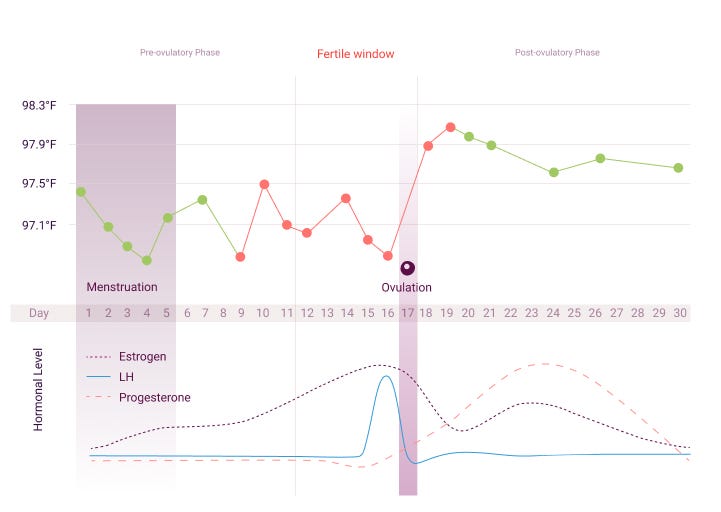My thoughts are for people with MS, including all my patients, who have to live through and cope with this latest heatwave.
The BBC is reporting that the UK is likely to record its hottest day, either today or tomorrow.
“An amber warning for extreme heat has begun for England and parts of Wales as the UK braces for record temperatures. The Met Office warning extends to southern Scotland on Monday and Tuesday, when England's alert rises to red for the first time. … The heat could hit 41C on Monday, which would be a record for the UK. The current temperature record of 38.7C was set in Cambridge in 2019. ….Downing Street said the heatwave was being treated as a national emergency.”
How are you tolerating the heat? I suspect many of you with heat sensitivity will be experiencing worsening fatigue, pseudo-relapses (heat-induced intermittent symptoms) and difficulty sleeping. Are you coping?
Please note that the main consequence of a raised body temperature in demyelinated or remyelinated pathways is slowed conduction. The commonest example is exercise-induced fatigue, but this summer’s heat wave will be causing symptoms without the need for exercise. Some of you will find difficulty walking difficult; your legs will begin dragging minutes into walking rather than after 20-30 minutes. Others will notice blurring of vision mid-morning when in the past, this would only happen in the late afternoon. The reason for this is that the demyelinated segments in the nerve stop conducting due to temperature-induced conduction block from the slight rise in temperature affecting the functioning of the sodium channels.
Sodium channels are the small molecules in the membranes of nerve cells that transmit the electrical signal down a nerve fibre, which require energy to work. These sodium channels are ion pumps optimised to function at a certain temperature and explain why pwMS are heat sensitive.
In the two videos below, you can see a recording of electrical conduction down a myelinated nerve. In the normal nerve, the electrical impulse (action potential) rapidly and efficiently jumps from one internode (between myelin segments) to the next. This illustrates why we have myelin to allow the energy efficient and rapid conduction of electricity down our nerves.
In the second video, a myelin segment has been damaged and removed, and the axon (nerve segment) has been allowed to recover conduction by synthesising and inserting sodium channels into the demyelinated segment. The conduction across this demyelinated segment is very slow and precarious. You can get an idea of how energy inefficient conduction is across this segment and explains why it takes so much more energy for someone with MS to complete a task compared to someone without MS. Imagine if this process is occurring across many different neuronal systems in your brain and spinal cord? This explains why pwMS often find cognitive and physical tasks exhausting.
Most of you will have heard of Uhthoff’s phenomenon. Wilhelm Uhthoff (1853-1927) was a famous German Professor of ophthalmology who described temporary visual loss associated with optic neuritis linked to physical exercise. This was later found to be caused by a rise in body temperature. The so-called safety factor of conduction in the demyelinated segment of the optic nerve is reduced and becomes very temperature sensitive.
This phenomenon is now known to affect other neurological systems, for example, the motor system when walking, balance, sensory pathways, and even the cognitive centres.
Apart from cooling, we do not have a treatment for Uhthoff’s phenomenon. The drug Fampridine has been licensed to improve walking speed in pwMS. Interestingly, several pwMS have said to me in the past that their heat sensitivity, including Uhthoff’s phenomenon, has improved since taking Fampridine.
What can I do?
I would suggest wearing light, loose-fitting clothes and try to avoid staying out in the sun. If you go into the sun, you should protect yourself with sunglasses, sunscreen and a hat, take water, and stick to the shade. It is also important to avoid doing excessive physical activity in the heat. If you get into trouble, you may find taking cold, or even ice baths, or simply keeping your hair and top wet and relying on evaporation to cool you. Those of you with air-conditioning installed use it wisely. One of my patients has a butcher’s fridge at home that runs at 4C and is large enough for her wheelchair. She uses it 4 to 5 times daily and tells me she couldn’t manage without it. Some pwMS have cooling vests. Good quality high-tech cooling vests are expensive and are not covered by the NHS.
Catamenial fatigue
Women with MS may notice increased fatigue and intermittent symptoms in the second half of their menstrual cycle and during menstruation. Why? After ovulation, a woman’s body temperature rises by approximately 0.4℃ (range = 0.3 to 0.6℃) which in someone with MS is enough to cause a temperature-dependent conduction block. The process of menstruation involves a mild systemic inflammatory reaction that may exacerbate fatigue. I refer to this as catamenial fatigue.
Catamenial = relating to or associated with menstruation

Over the years, I have had several female patients with MS who have reported successfully using aspirin or non-steroidal anti-inflammatories or paracetamol (acetaminophen) to self-manage this period of their cycle. If you suffer from catamenial fatigue, you may want to try one of these agents that almost certainly work by lowering body temperature.
Diurnal fatigue
Even the diurnal variation in body temperature may be sufficient to explain why some pwMS notice they get worse in the afternoon (see figure below) and may explain why some pwMS use an antipyretic such as ibuprofen or paracetamol (acetaminophen) to help with diurnal fatigue.

If you have any hacks for managing heat-induced MS-related fatigue, please share them with us.
Wellness
Finally, I have become a proponent that we, the MS community, need to go beyond health, and as part of the marginal gains philosophy of managing MS, we should also focus on wellness. Wellness includes our intellectual, emotional, physical, social, spiritual, occupational and environmental wellbeing. Maybe this heat wave and other environmental cues will prod us towards living more sustainably.
Subscriptions and donations
Paid subscriptions to MS-Selfie are being used to administer the Newsletter and associated MS-Selfie microsite currently in development. At the request of several readers, I have now added the option of making a one-off donation. To keep this initiative open to all readers, I would appreciate it if those who can afford a subscription, please subscribe. For active paying subscribers, thank you; your contribution is much appreciated.
General Disclaimer: Please note that the opinions expressed here are those of Professor Giovannoni and do not necessarily reflect the positions of Barts and The London School of Medicine and Dentistry or Barts Health NHS Trust. The advice is general and should not be interpreted as personal clinical advice. If you have problems, please tell your healthcare professional who will be able to help you.














Share this post